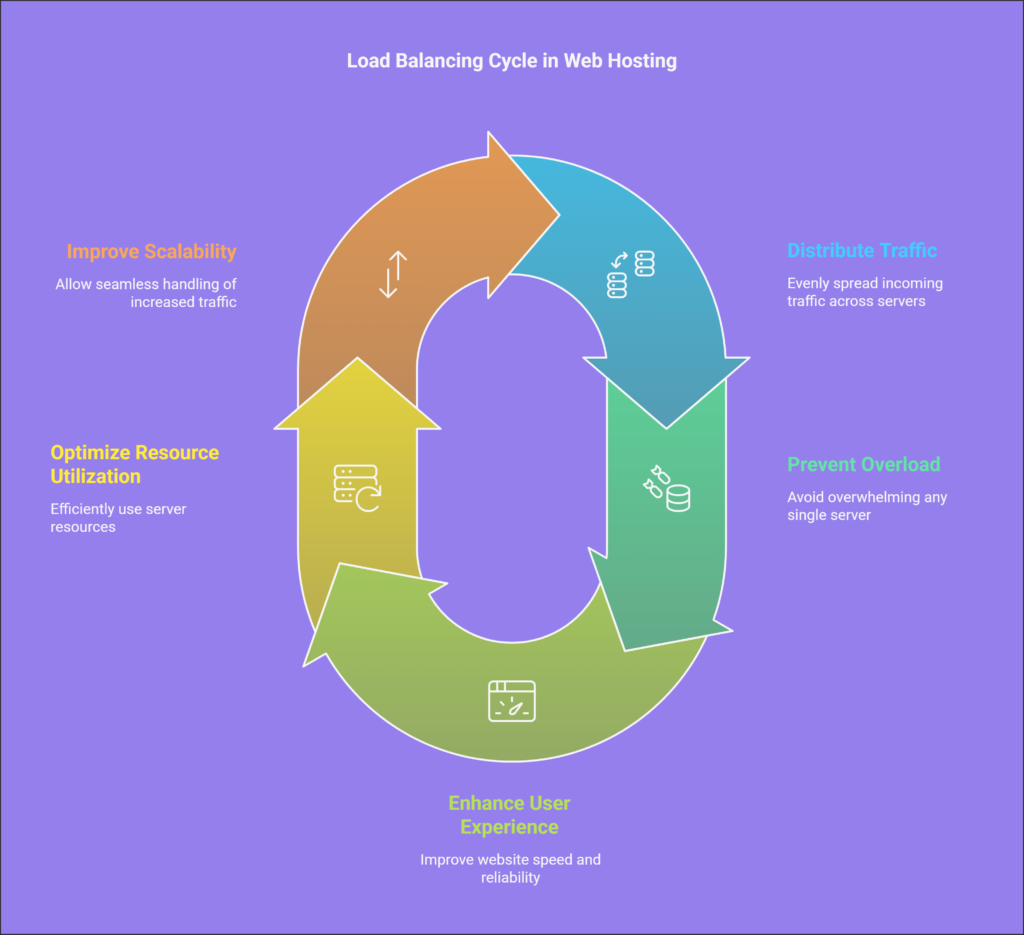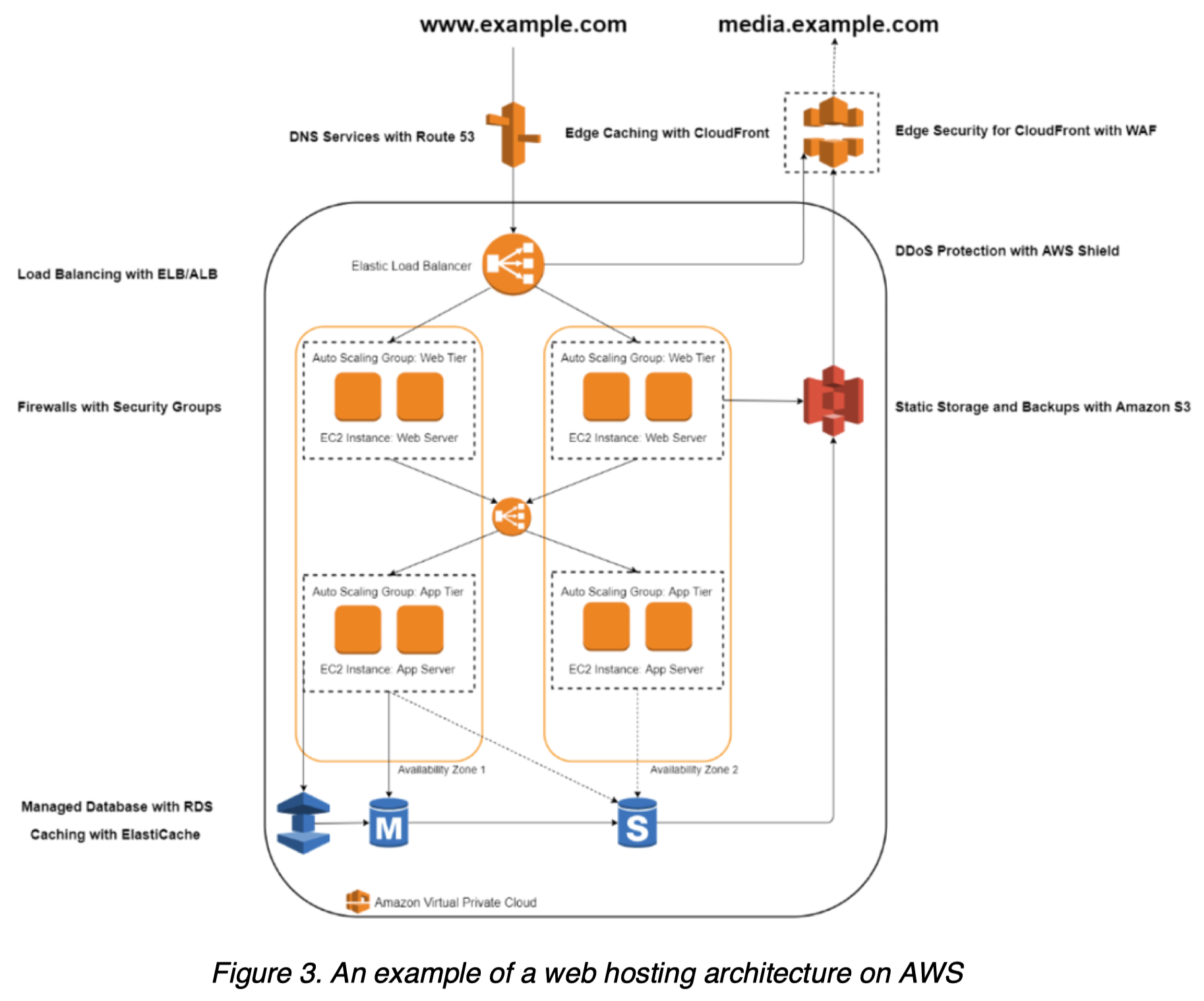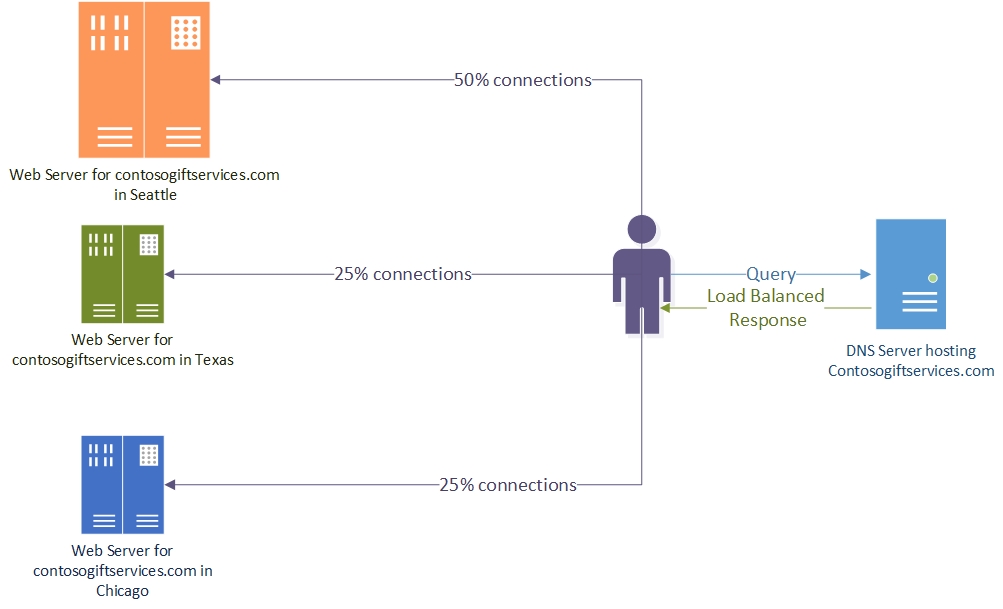Load balancing in web hosting is a method used to distribute traffic across multiple servers. It ensures no single server gets overwhelmed, maintaining smooth and efficient operation.
In today’s digital world, websites handle huge amounts of traffic. Without proper management, this can lead to slow performance or even crashes. Load balancing plays a crucial role in preventing these issues. By distributing incoming traffic evenly, it keeps websites running smoothly.
This is vital for maintaining user satisfaction and ensuring reliability. Understanding load balancing can help you make better decisions for your web hosting needs. So, let’s dive deeper into what load balancing is and why it’s important for your website.

Introduction To Load Balancing
Load balancing is a crucial part of web hosting. It ensures that your website runs smoothly, even during high traffic. Load balancing distributes incoming traffic across multiple servers. This helps prevent any single server from becoming overwhelmed. It also improves your site’s performance and reliability.
Importance Of Load Balancing
Load balancing is essential for maintaining a fast and reliable website. Without it, your site could slow down or crash during peak times. This can lead to a poor user experience and lost revenue. Load balancing also helps with:
- Reducing server load
- Improving response times
- Ensuring high availability
By spreading the load, your site stays up and running smoothly. This is especially important for e-commerce sites and other high-traffic websites.
Basic Concept Of Load Balancing
At its core, load balancing is about distributing traffic. There are several methods to do this:
- Round Robin: Traffic is distributed evenly across all servers.
- Least Connections: Traffic is sent to the server with the fewest connections.
- IP Hash: Traffic is distributed based on the client’s IP address.
Each method has its advantages. The best one for your site depends on your specific needs.
Load balancing can also be done at different levels:
- DNS Level: Distributes traffic based on domain names.
- Network Level: Uses routers and switches to distribute traffic.
- Application Level: Distributes traffic based on application-specific criteria.
Understanding these concepts can help you choose the right load balancing strategy for your website.
How Load Balancing Works
Load balancing is a key concept in web hosting. It ensures that web traffic is distributed efficiently. This keeps websites running smoothly. Understanding how load balancing works can help improve your website’s performance.
Distribution Of Traffic
Load balancing distributes incoming traffic across multiple servers. This prevents any single server from becoming overwhelmed. It helps maintain fast response times and reduces server downtime.
Imagine a busy restaurant. Instead of having all customers go to one waiter, they are spread out among several. This ensures everyone gets served quickly. Load balancing works in a similar way, balancing the load across servers.
Algorithms Used
Load balancers use different algorithms to distribute traffic. One common method is the round-robin algorithm. It sends each new request to the next server in line. This method is simple and effective.
Another algorithm is the least connections method. It sends requests to the server with the fewest active connections. This helps ensure that no server gets too busy. Other algorithms include IP hash and weighted round-robin. Each has its benefits and use cases.
Choosing the right algorithm depends on your website’s needs. Understanding these algorithms helps you make better decisions for your web hosting.
Types Of Load Balancers
Understanding load balancers is essential for web hosting. Load balancers ensure that traffic is evenly distributed across servers. This helps maintain optimal performance and reliability. There are two main types of load balancers: hardware and software.
Hardware Load Balancers
Hardware load balancers are physical devices. These devices manage network traffic. They sit between the servers and the network. Hardware load balancers are known for their reliability. They offer high performance and low latency. They are ideal for large-scale web hosting environments. However, they can be expensive. They also require maintenance and upgrades.
Software Load Balancers
Software load balancers are applications. They run on standard servers. These balancers are flexible and cost-effective. They can be easily scaled up or down. Software load balancers are suitable for small to medium-sized businesses. They offer many features. These include auto-scaling and integration with other tools. However, they may have higher latency compared to hardware options. They also depend on the underlying server’s resources.

Credit: wangfanggang.com
Benefits Of Load Balancing
Load balancing is a crucial aspect of web hosting that ensures the efficient distribution of incoming network traffic across multiple servers. This process offers numerous benefits, significantly enhancing the performance and reliability of your website. Let’s delve into the benefits of load balancing.
Improved Performance
One of the primary benefits of load balancing is improved performance. By distributing the traffic evenly across multiple servers, load balancing ensures no single server is overwhelmed. This results in faster load times for users.
Imagine a scenario where thousands of users visit your website simultaneously. Without load balancing, a single server might struggle to handle the traffic. This can lead to slow load times, causing frustration among users. With load balancing, the traffic is distributed, ensuring each server handles a manageable amount of traffic. This keeps your website running smoothly and efficiently.
Increased Reliability
Another significant benefit of load balancing is increased reliability. Load balancers can detect server failures and redirect traffic to healthy servers. This ensures your website remains accessible even if one or more servers fail.
For instance, if a server goes down due to hardware issues, a load balancer will automatically reroute traffic to other operational servers. This prevents downtime, ensuring your website remains online. Reliability is crucial for maintaining user trust and satisfaction.
In summary, load balancing enhances both the performance and reliability of your website. It ensures faster load times and consistent uptime, providing a better user experience.
Load Balancing Strategies
Load balancing strategies are essential for managing web traffic. They help distribute user requests across multiple servers. This ensures that no single server becomes overwhelmed. Different strategies can be used based on specific needs and goals.
Round Robin
The Round Robin strategy is simple and effective. It distributes incoming requests to each server in turn. This method works well for servers with similar capacities. It ensures an even distribution of traffic. Each server gets an equal chance to handle requests. This keeps the load balanced across all servers.
Least Connections
The Least Connections strategy focuses on server load. It directs traffic to the server with the fewest active connections. This helps manage uneven loads. It ensures no server gets overloaded. This method is useful for dynamic environments. It adapts to changing traffic patterns.

Credit: webhostinggeeks.com
Challenges In Load Balancing
Load balancing is essential for distributing web traffic. It ensures websites remain fast and reliable. Yet, it comes with its own set of challenges. These challenges need addressing to maintain optimal performance.
Handling Traffic Spikes
Websites often experience sudden traffic spikes. These can be due to promotions, viral content, or special events. Spikes can overwhelm servers, causing slowdowns or crashes. Load balancers must quickly adapt to these changes. They need to distribute traffic evenly to prevent overloading any single server.
Ensuring Redundancy
Redundancy is critical for uptime. Load balancers must ensure backup servers are available. If one server fails, traffic should seamlessly switch to another. This prevents downtime and keeps the website running smoothly. Effective load balancing strategies require constant monitoring. This ensures all servers are operational and ready to handle traffic.
Implementing Load Balancing
Implementing load balancing in web hosting can greatly improve website performance. It helps distribute traffic across multiple servers, ensuring no single server gets overwhelmed. This results in faster load times and a better user experience. Below, we will discuss the crucial steps for implementing load balancing.
Choosing The Right Load Balancer
The first step is choosing the right load balancer. Different types are available, such as hardware, software, and cloud-based options. Hardware load balancers are physical devices placed within your network. They offer robust performance but can be expensive. Software load balancers run on standard servers and are more cost-effective. Cloud-based load balancers are managed by third-party providers and offer high flexibility.
Consider your needs and budget. A small website may only need a software load balancer. A large enterprise might require a hardware load balancer. Cloud-based options are suitable for scalable and flexible solutions.
Configuration Steps
Once you have chosen your load balancer, proceed with the configuration steps. Start by setting up the servers that will share the load. Ensure each server has the necessary resources and configurations. Next, configure the load balancer to distribute traffic evenly among the servers. You can use round-robin, least connections, or IP hash methods.
Monitor the load balancer to ensure it functions correctly. Use monitoring tools to check server performance and traffic distribution. Regularly update and maintain your load balancer to keep your website running smoothly.
Monitoring And Maintaining Load Balancers
Load balancers play a crucial role in web hosting. They distribute incoming network traffic across multiple servers. This helps ensure optimal performance and reliability. To keep load balancers functioning efficiently, regular monitoring and maintenance are essential.
Regular Monitoring
Regular monitoring of load balancers helps identify potential issues before they escalate. It ensures that the system operates smoothly. Here are some key aspects to monitor:
- Traffic Patterns: Analyze traffic patterns to understand peak usage times.
- Server Health: Check server health to ensure they can handle the load.
- Response Times: Monitor response times to detect any delays.
- Error Rates: Keep an eye on error rates to identify failing servers.
Use monitoring tools to automate these checks. Tools like Nagios, Zabbix, or Datadog provide real-time insights. They alert you to any anomalies.
Troubleshooting Issues
Despite regular monitoring, issues can still arise. Here are some common problems and their solutions:
| Issue | Solution |
|---|---|
| High Response Times | Check for overloaded servers. Redistribute traffic if necessary. |
| Server Failures | Identify the failing server. Redirect traffic to healthy servers. |
| Increased Error Rates | Investigate the cause. This could be due to network issues or server overload. |
| Unbalanced Traffic | Adjust load balancing algorithms. Ensure even distribution of traffic. |
Effective troubleshooting requires a systematic approach. Document each issue and its resolution. This helps in quick resolution of similar issues in the future.

Credit: learn.microsoft.com
Frequently Asked Questions
What Is Load Balancing?
Load balancing is the process of distributing network traffic across multiple servers. It ensures no single server is overwhelmed.
Why Is Load Balancing Important?
Load balancing improves website performance, reliability, and availability. It ensures even distribution of traffic.
How Does Load Balancing Work?
Load balancers distribute incoming network traffic to multiple servers. This prevents any single server from becoming overloaded.
What Are The Types Of Load Balancing?
Types of load balancing include DNS load balancing, hardware load balancing, and software load balancing.
Conclusion
Load balancing in web hosting is crucial for managing traffic effectively. It ensures better performance and reliability. Websites experience less downtime and faster load times. This improves user experience and satisfaction. Implementing load balancing can save resources and enhance security.
Understand your hosting needs and choose the right solution. Balancing helps handle high traffic smoothly. It is essential for modern websites and online businesses. Make your site more robust and efficient with load balancing. Your users will appreciate the smooth and fast experience.

